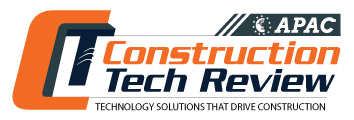THANK YOU FOR SUBSCRIBING

Leveraging Technology to Streamline Construction Processes
Jimmy Kaphusman, Project Director, M. B. Kahn

 Jimmy Kaphusman, Project Director, M. B. Kahn
Jimmy Kaphusman, Project Director, M. B. KahnJimmy Kaphusman is a seasoned expert in the field of building construction. He graduated from the University of Florida in 2008 with a Bachelor of Science in Building Construction from the M.E. Rinker, Sr. School of Building Construction.
A Journey through Construction
I began my career as a project engineer and quickly transitioned into an assistant project manager role. This experience allowed me to explore various facets of the industry, ultimately I took a quality control manager position with a general contractor focused on federal projects. After gaining valuable insights into the field, I moved back into project management and steadily advanced to the position of project director.
The Impact of Market Instability on Timelines
Today's primary challenge is balancing project budgets with owners' expectations while navigating unpredictable lead times. Although prices have stabilized since the COVID-19 pandemic, lead times for key items—particularly mechanical and electrical equipment—remain longer than pre-pandemic levels, though gradually returning to normal. Owners often seek precise delivery dates, but factors like market volatility and unforeseen disruptions—like the recent risk of port shutdowns—can push timelines back by months. Fortunately, most owners are now more understanding of budget adjustments due to inflation and the ongoing shifts in the post-COVID market, recognizing that costs today are significantly higher than they were just a year or even four years ago.
Aligning All Parties for Smooth Project Execution
The key to project success is open communication with everyone involved, particularly the owner.
During the bidding process, a clear contract with a force majeure clause can protect both the owner and the general contractor from unexpected cost increases due to unforeseen events. However, beyond contractual terms, keeping the owner informed is essential. I strive to ensure they understand that the price will be locked in for that period if they sign the contract within a certain timeframe. Without regular, transparent updates, an owner may be surprised by delays or cost changes down the line, which can lead to dissatisfaction.
“It is essential to avoid getting stuck in old habits and stay open to the younger generation's ideas. Whether it is about how we communicate, like using text, email, or other digital tools or something more technical, these new approaches can add much value”
Communication needs to extend to subcontractors and their suppliers, as they are the ones performing the work. As a general contractor, I coordinate closely with them to ensure they’re fully prepared for the project and meet the agreed-upon terms. When a subcontractor revisits a project mid-course and claims they can’t complete it for the original bid, it disrupts timelines and can increase costs. We can't simply pass these additional expenses onto the owner, as it would be unfair and contrary to the original agreement.
Maintaining open communication—across all levels, from owners to subcontractors and suppliers—is the key to keeping projects on track. This fosters trust, helps manage costs, and minimizes the risk of unforeseen changes, ensuring everyone remains aligned throughout the project.
The Shift from Paper to Digital Access
We are making significant strides with technology in the industry. In the past, project management relied heavily on paper—drawings and specifications had to be kept on-site, often in the trailer, as carrying large sets of prints or binders around wasn't practical. Today, with everything accessible through smartphones and tablets, we have instant access to plans, reports, and specifications, no matter where we are on-site. This shift has greatly improved efficiency and accessibility, streamlining communication and decision-making during project execution.
The introduction of tools like BIM modeling and mobile applications has transformed workflows. Superintendents, for instance, can now complete daily reports, manage punch lists, and access plans directly on their devices.
They can even take photos of issues and send them to subcontractors in real time, streamlining problem-solving. While not everyone uses these tools to their fullest, they are widely available and making a significant impact.
As the field technology market grows, companies like PlanGrid, Procore, and CMiC compete to provide better tools. Early on, they offered basic functionality and weren’t as responsive to feedback. Now, they are actively listening to field users and adding features based on real needs, which has driven better functionality and usability across platforms. This shift to a customer-centric approach in construction technology is a positive trend for the industry.
The Importance of Adaptable Communication
My advice to young professionals and fellow peers is to listen to the up-and-coming voices in our industry. The construction industry has traditionally been shaped by an older generation accustomed to established methods and processes. However, a new wave of graduates—armed with tech expertise and fresh, innovative ideas—is bringing a different perspective to the field. These young professionals are challenging traditional approaches, introducing new solutions and technologies that many veterans may not have previously considered, ultimately driving the industry forward.
It is essential to avoid getting stuck in old habits and stay open to the younger generation's ideas. Whether it is about how we communicate, like using text, email, or other digital tools or something more technical, these new approaches can add much value. Unfortunately, a common issue in our industry is that many experienced professionals resist input from these newer voices. However, we must recognize that this generation will shape the industry's future over the next 20 to 30 years. The key is to listen to everyone on your team—regardless of their level—because every role contributes something valuable to the project.
Read Also
Development of the Logistics Warehousing Market in Brazil
Driving Innovation and Preserving Tradition
Operational Leadership VS Field Leadership in the Utility Construction Business
People-First Innovation: Developing Virtual Design and Construction (VDC) Training Programs to Empower Field Team Members
Sustainable Projects: Aligning Business and Purpose in Latin America
Engage Smarter: Why Constraints Matter More Than Hazards

 Copyright © 2025 All Rights Reserved | by:
Copyright © 2025 All Rights Reserved | by: Construction Tech Review
| Subscribe | About us | Sitemap| Editorial Policy| Feedback Policy














